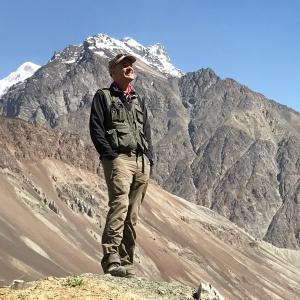Arriving in Addis Ababa
Addis has changed beyond recognition from the place I drove my bike into 30 years ago. Then it felt like a sleepy backwater, with barely a building over four floors and many slums. Today it’s a thriving metropolis, packed with sky-high office blocks and smart residential towers (many still being constructed), dense traffic, a raised metro, no visible slums and an estimated eight million residents. As the centre for African Unity, a political union of all African nations, it has developed over the past two decades into one of Africa’s true success stories. With a huge manufacturing base and a plethora of other industries, it’s a boom town on par with Johannesburg and Lagos.
.jpeg)
Of course, the war between the national government and the Tigray nationalists has left the country with a bloody nose, but as a casual observer, you wouldn’t know it. We visited the new Unity Park – Prime minister Abiy Ahmed’s $100m kitsch new vanity project – the former royal palace and grounds, the excellent National Museum, home to Lucy, our famous 3.2-million-year-old ancestor, and Entoto Hill.
Sitting in a bowl at 2,400m above sea level, Addis Ababa (meaning New Flower) is the third-highest capital city in the world, behind La Paz and Quito. Entoto Hill rises another 400m above that and from here the views down over the city are fantastic and really show how large the city has become.
 (1).jpeg)
For dinner, we went to Habasha, a lively restaurant I have been to many times before and enjoyed a delicious Ethiopian dinner while being entertained by traditional music and dancing.
.jpeg)
There is a little more security around than I remember. On arrival yesterday we had our binoculars confiscated – apparently, they have been banned since the start of the war – and armoured cars, with bored-looking soldiers, protected the main junctions into Meskal Square, the city’s central hub. And with an African Unity summit in town next week, security operations are ongoing with road closures causing us some stress getting to the airport this morning. Still, other than that things feel pretty normal.
Today we are heading north to Gonder, the capital of the 17th-century Abyssinian empire, and from there we’ll travel into the spectacular Simien Mountains. Addis has been fun, but it’s in the north that Ethiopia’s real culture and beauty can be found.
